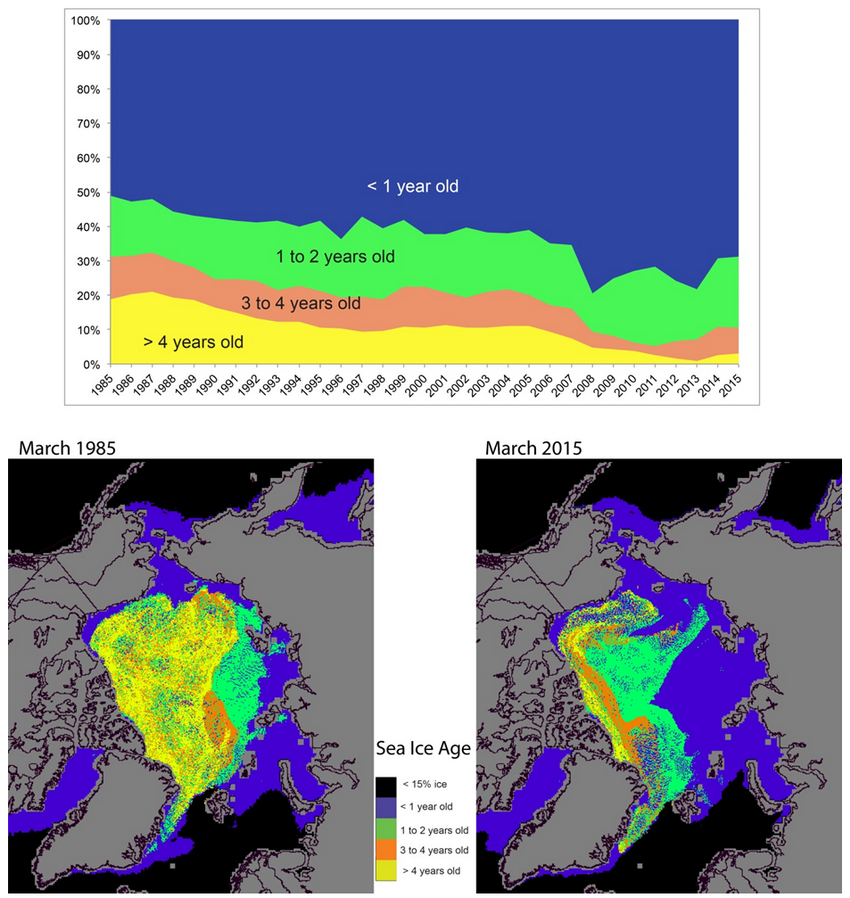Stratified Ocean Dynamics of the Arctic
There has been a significant arctic warming, accompanied by changes in the thickness distribution, extent, and properties of the arctic sea ice cover. Stratified Ocean Dynamics in the Arctic (SODA) is a research initiative that is motivated by the observed changes in the upper ocean stratification in the Beaufort and Chukchi Seas and the increased open water during summer months in this region. It will focus on understanding how the Beaufort and Chukchi Seas respond to changes in surface forcing and in flow. This program will use advances in autonomous observing from the Marginal Ice Zone Department Research Initiative to employ a system of four interrelated components:
- Drifting observations from ice-based buoys and instruments drifting in the water column
- Geographically fixed sampling by moorings and gliders
- Beaufort Sea inflow observations by floats and Pressure Inverted Echo Sounders (PIES)
- Ship-based process study, all of which will be augmented by remote sensing and numerical simulations.

A time series of sea ice age in March from 1985 to the present (top) and maps of sea ice age in March 1985 (lower left) and March 2015 (lower right). From Petrovich et al. (2015).
Questions on buoyancy, momentum and heat are the three oceanographic properties that will be addressed.
Buoyancy
- What are the causes and consequences of the changing upper ocean stratification (mixed layer and Pacific Water)?
- Vertical: What is the interplay among wind entrainment, convection, solar heating, and buoyancy input?
- Lateral: What is the importance of heterogeneity in mesoscale and submesoscale processes?
Momentum
- How is the wind stress partitioned within in the ice-ocean system (depth and frequency; surface waves; ice motions; mixed layer and deeper acceleration; internal waves)?
Heat
- What is the fate and impact of the significant increase in upper ocean heat (and the associated sound channel)?
- What processes control the near surface temperature maximum formation and release
- How difficult is it for the mixed layer to entrain and access heat carried in the Pacific Water, and how does it vary with sea ice conditions?
Funding Agencies
The Office of Naval Research is funding this research.

Partners/Collaborators
This is a joint project with Applied Ocean Physics Lab - University of Washington, Scripps Institution of Oceanography, Naval Post Graduate School, British Antarctic Survey, University of New Hampshire, Korean Polar Research Institute, Polar Scientific Ltd., RMAS - University of Miami, Massachusetts Institute of Technology, Inha University, University of Alaska - Fairbanks, Naval Oceanographic Laboratory - Stennis Space Center, and Bruncin d.o.o.